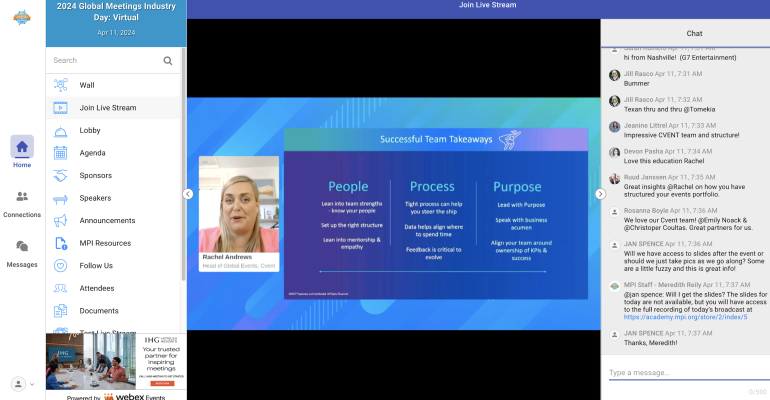Held this year on Thursday, April 11, Global Meetings Industry Day is “an international day of advocacy showcasing the undeniable value that business meetings, trade shows, incentive travel, exhibitions, conferences, and conventions bring to people, businesses, and communities,” according to the U.S. Travel Association, which runs the Meetings Mean Business Coalition.
Organizations around the world, including Meeting Professionals International, Professional Convention Management Association, hoteliers, and various destinations, mark GMID with in-person gatherings for networking and learning.
In addition, MPI conducts a 12-hour online-education marathon featuring three 15-minute sessions per hour; these cover a wide range of job issues for planners as well as career advancement and physical and mental wellness. Here’s a sampling of the useful content that was presented.
Lesson 1: Mentors Can Move Everyone Forward
Adam Tarnow, a professional-development expert at consulting firm PeopleWorks International, led an early-morning session on why mentors are useful not only to planning novices but also to veterans. “At any point in their career, planners can feel stuck—caught up in the fog of their work—and not have a clear direction on where they want to go,” he said.
He pointed out that volatility, uncertainty, complexity, and ambiguity (VUCA) are present in every working environment. “That is why we need mentors who are father down the road in their career,” or perhaps younger mentors who are savvy about technology or the motivations and communication styles of their cohorts. In either case, “a mentor helps us gain clarity, and from that we can achieve the success we want while avoiding failures along the way.”
The key, Tarnow said, is to “proactively find a mentor; they do not simply appear in front of you” in your day-to-day work. Industry-wide conferences, local industry meet-ups, and online professional forums are good places to look. When a planner finds a prospective mentor, “simply ask if they might have, say, 30 minutes a week for you to bounce situations and ideas off of them. They might have more time, or they might have less time. But take whatever they can provide, write down your questions throughout each week, and then write down their answers. And send them thank-you notes often!”
Tarnow’s final thought for planners: “There is no such thing as a self-made person. Everyone has help along the way. Just ask.”
Lesson 2: Managing an Institutional Events Program
Rachel Andrews, head of global events for Cvent, presented planners with the framework of her organization’s 30-person events division that coordinates more than 700 large, mid-sized, and small in-person and online meetings each year. That framework is based on three pillars: people, process, and purpose.
Regarding people, Andrews noted that for each team working on a given event, she makes sure to bring on individuals with complementary skills so that no area of responsibility is underpowered. So, each team is built out with people adept in event design and execution; in event marketing and analytics; and event technology and operations.
As for process, Andrews has each team answer the following questions:
• What are the objectives?
• What event type should be used for the desired outcomes?
• Which delivery/service model should be used? What is the role of technology for the event?
• What feedback mechanisms should be used for the event?
Andrews’ third pillar is purpose, and it relates closely to the first pillar: people. Specifically, “managers have to be empathetic to their people: Help them understand what they are good at, as well as the reasons why what they do is important” both to attendees and to the business.
On the flip side, clearly communicating what each team is accountable for is equally critical. “Align your teams around ownership of specific KPIs and successes,” Andrews advised.
Lesson 3: Trends to Follow Over the Next Year
Rob Adams, president of Bishop-McCann, told the online GMID crowd that two trends are top of mind for him right now.
First is artificial intelligence’s increasing application in pre-event, on-site, and post-event meeting elements. These include marketing, logistical planning, agenda-building, event-app features, attendee networking and other experiences, on-site service, and feedback/data analytics.
The other trend that has Adams’ attention is that, for the first time, “there are five generations of people in the workplace. So, what do we have to do to give everyone a personalized experience at events?” Interestingly, some of the solutions might come from planning teams using A.I.





